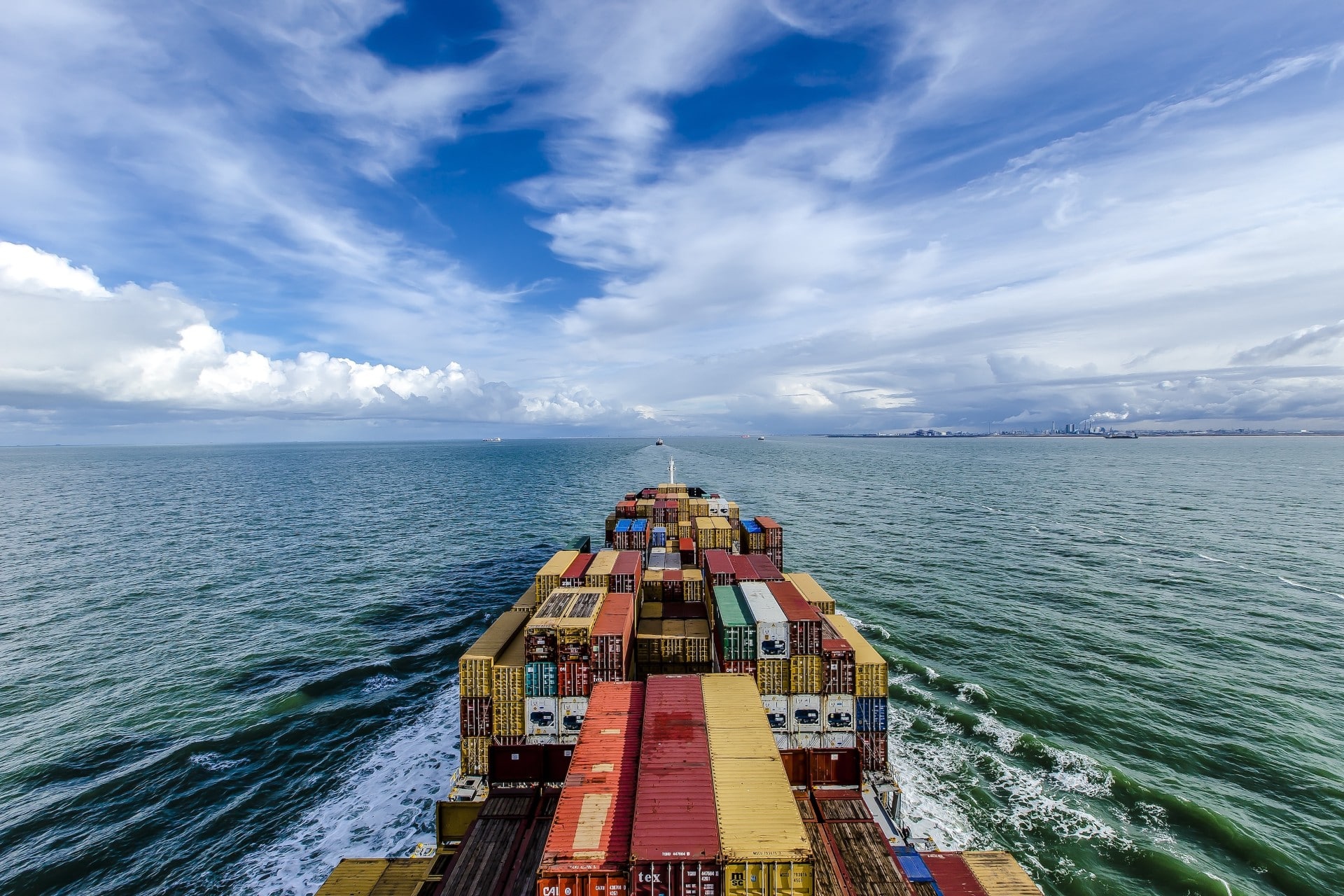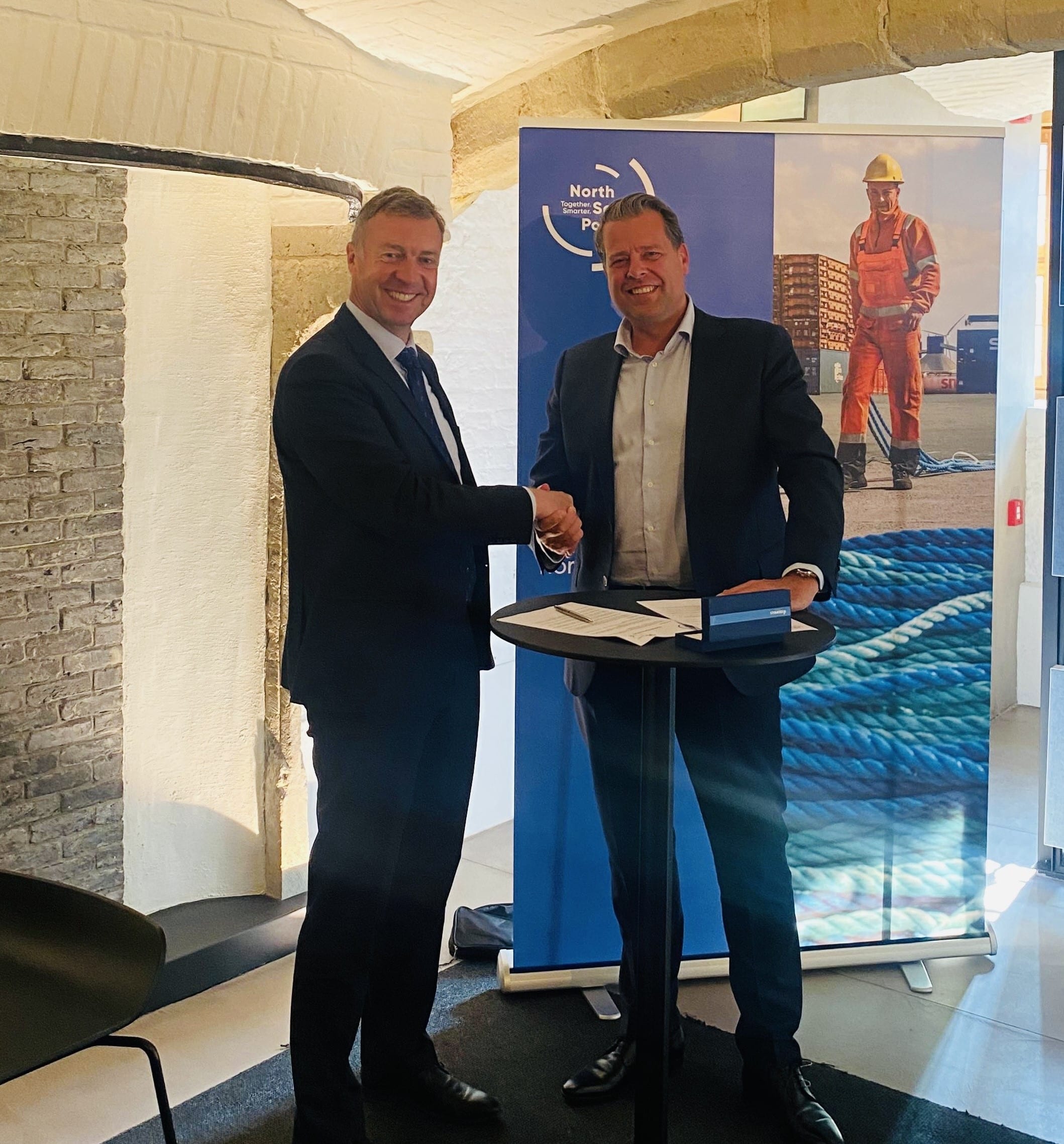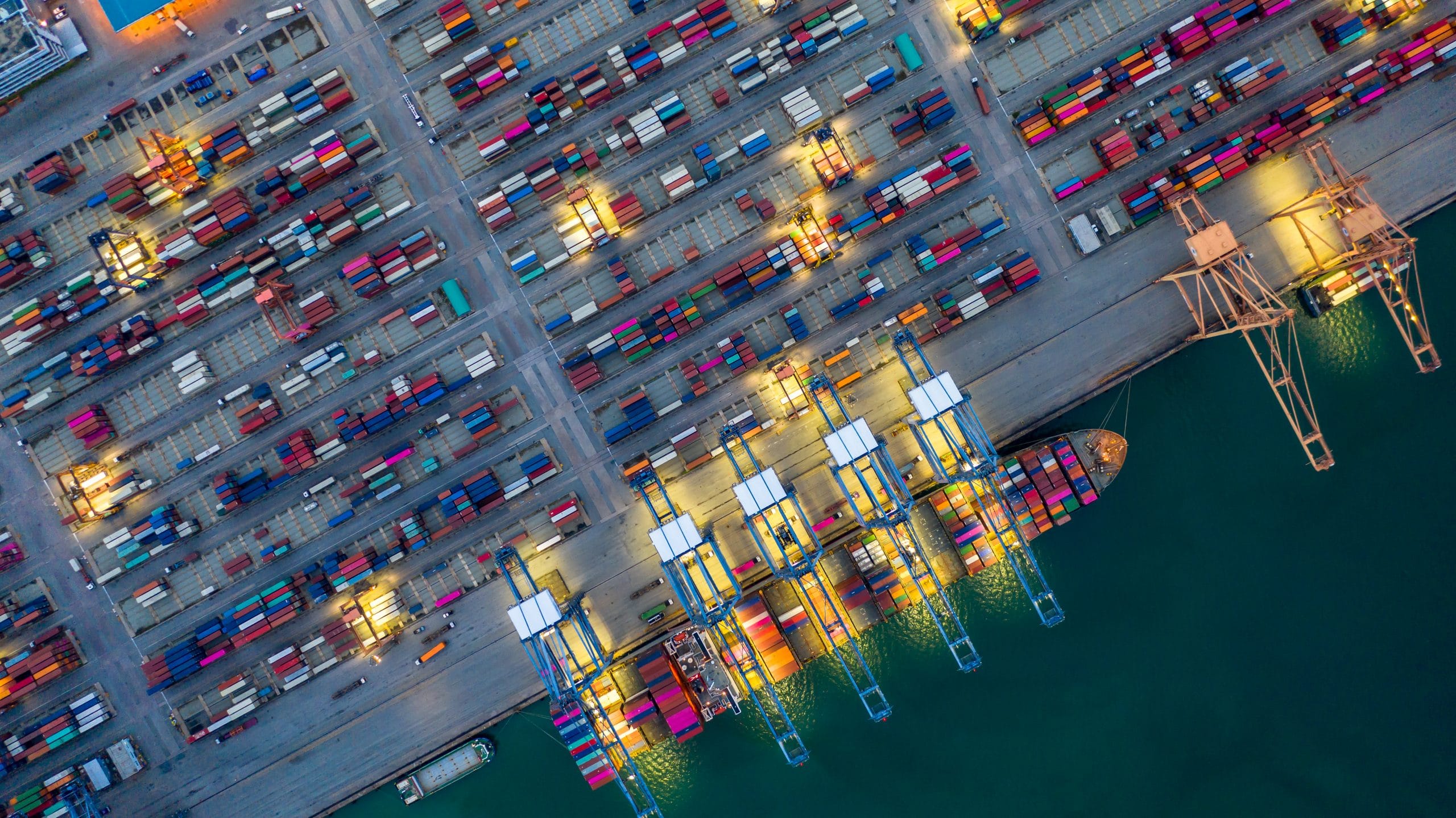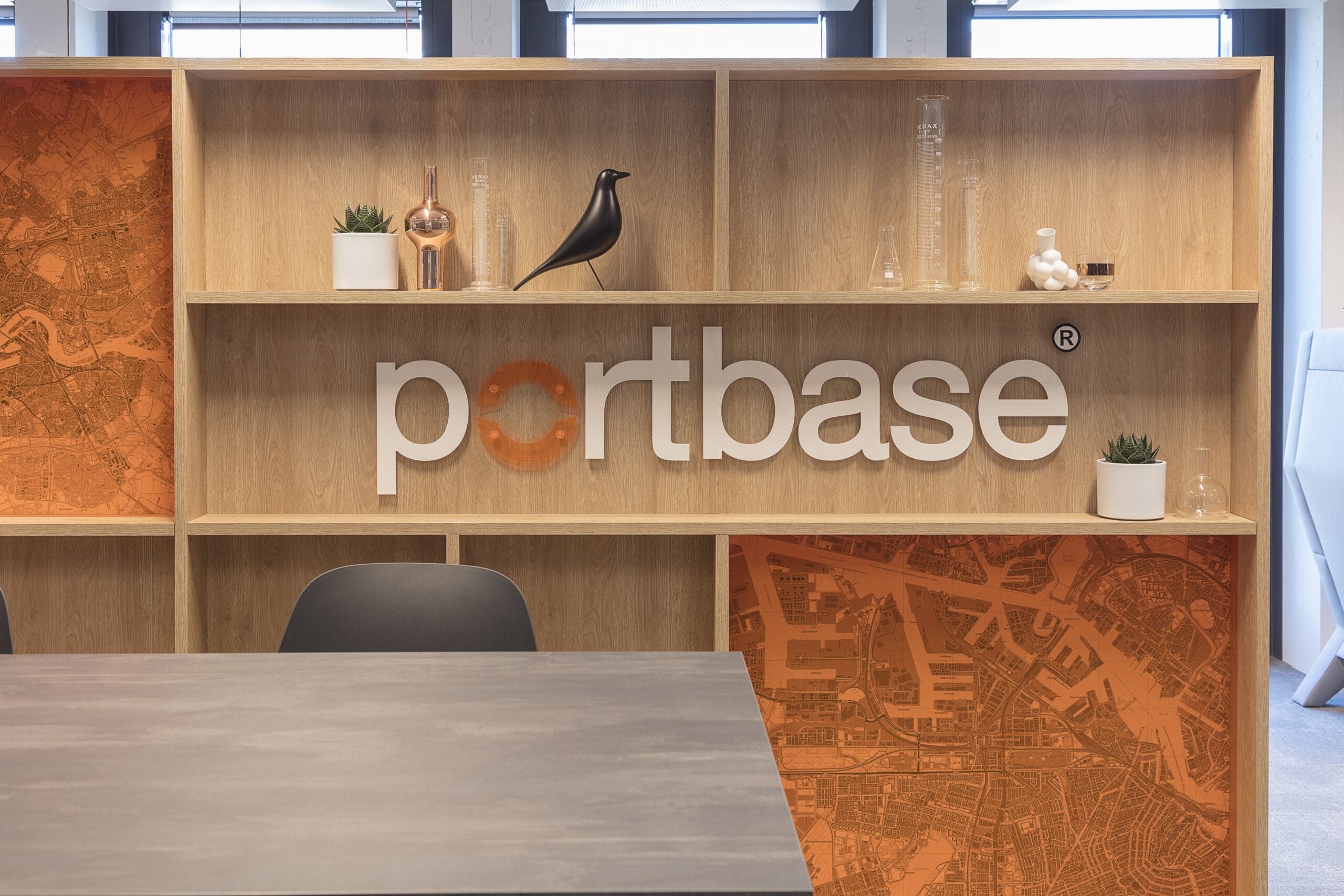In response to customers’ desire to be able to exchange more data at the front and back ends of logistics chains, Portbase is rolling out an international strategy. After all, logistics chains do not end at the Dutch border. With customer-focused moves in Germany, the start of cooperation with RheinPorts and various global initiatives, the strategy is currently taking concrete shape.
“Within our community, we see a growing need among companies for greater insight into their logistics chains”, observes Donald Baan, Manager of Business Development, Marketing & Sales. “Covid and other disruptions have significantly reinforced that process.” By means of an international strategy, Portbase therefore wants to help unlock data further down the logistics chains. This applies both on the sea side and towards the hinterland. The new approach was approved by the Supervisory Board and the Strategic Advisory Board in 2021. The rollout is now underway. Portbase did not have to start from scratch. Some 700 parties have been using the Port Community System (PCS) for some time now, most of them based in Germany, Switzerland and Austria. An initial form of cooperation also exists with the global data exchange platform TradeLens.
Customer needs at the heart of everything
The international strategy ranges from approaching potential new customers for Portbase services in the hinterland to exploring prospects for digitally connecting Northwestern Europe with the rest of the world. Manager Business Development, Charlotte Goos: “Our customers’ needs are at the heart of everything we do. Our thinking is based on the value to our community. But of course, data sharing always goes both ways. More insight here in the Dutch ports also means more insight for parties elsewhere.”
Into the hinterland, one region at a time
Portbase is tackling the digitisation of hinterland connections step by step. Goos: “We are first focusing concretely on the Duisburg region and on the waterways in the Rhine-Alps corridor. We have presented our services to German industry bodies and also surveyed their needs. This has generated a lot of positive feedback. The first new customers are now connected to the PCS.” Portbase wants to extend this approach, region by region, to the rest of Germany, Switzerland and Austria. “In doing so, we are explicitly looking at the entire chain. Besides shippers, for example, we are also including their inland terminals, carriers and other partners such as shipping companies and sea terminals. If the entire chain participates, connecting to the PCS becomes even more valuable.”
Partnership with RheinPorts
Another important step towards the hinterland is the cooperation agreement signed on 31 August with RheinPorts to expand the digital infrastructure along the Rhine-Alps corridor. RheinPorts is the joint multimodal information system of the Port of Duisburg, the Port of Mulhouse and the Swiss Rhine ports. In the future, the partnership should lead to a better digital connection with the port communities involved. Baan: “At Portbase and RheinPorts, we are combining our innovative capabilities to this end. By enabling more data exchange, the companies in the Dutch ports get a better picture of containers arriving from the hinterland, for example. Conversely, the same is true for parties in the hinterland with respect to containers heading in their direction. By 2023, we hope to be sharing data in an initial pilot with RheinPorts and companies in the community.”
Connecting to global platforms
On the sea side, Portbase wants to help increase transparency in logistics chains, for example through further cooperation with the global platforms of shipping companies such as TradeLens and GSBN. Goos: “At their request, we have been providing TradeLens participants with data on the release of their containers in the Dutch ports for some time now. Conversely, we can get data from TradeLens, for instance on when containers leave Asia. All kinds of data sharing along these lines are conceivable.” Goos envisions a future in which Portbase becomes a regional hub for global platforms in Northwestern Europe. “Everyone in our port community will then be able to connect to that very easily. We act as a kind of plug.”
Netherlands – Singapore
Also on the sea side, but at a different level, is the data sharing that Portbase is aiming to facilitate between customs authorities in the Netherlands and Singapore. Baan: “This is about exchanging data for even smoother handling of customs processes. These kinds of global pathways require a longer timeframe. Through pilots, we can demonstrate their value.”
Time must be ripe
In this way, Portbase is always proactively looking at where it can add value for the international port community. Sometimes, that may lead it to the conclusion that the time is not yet ripe. Goos: “For the shortsea sector, we saw potential added value in timely data sharing on the loading and discharge of shortsea containers with parties in other European ports. In practice, there is currently insufficient interest in this within the community.”
“With our existing broad community and services that extend deep into the logistics process, we are well positioned to play a bigger role internationally as well”, Baan concludes. “Based on our neutral, facilitating and overarching role, we are keen to ensure that we involve our community in all the steps that need to be taken. Data owners always remain in control and data sharing takes place only with their consent, in a completely secure environment.”





